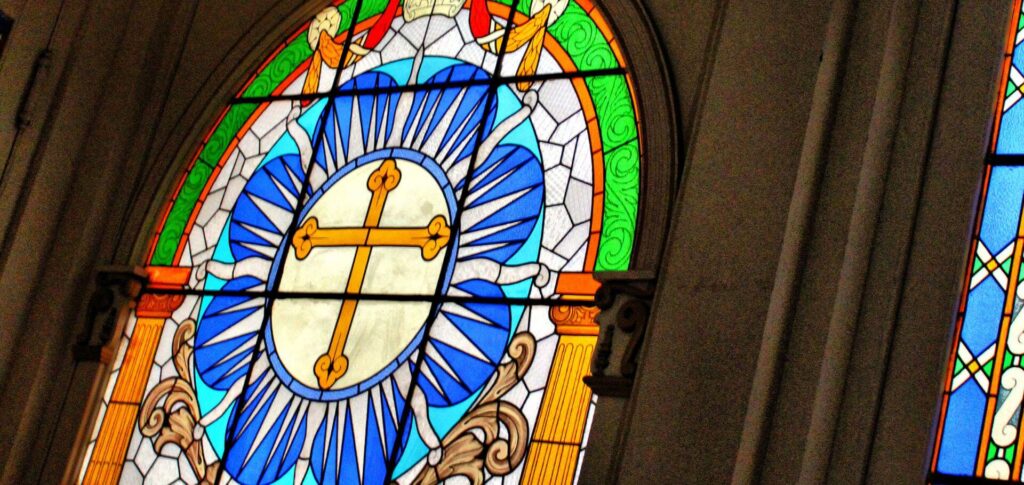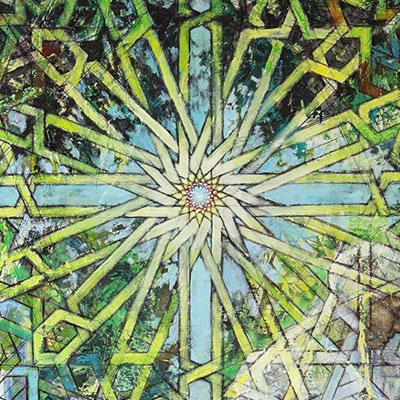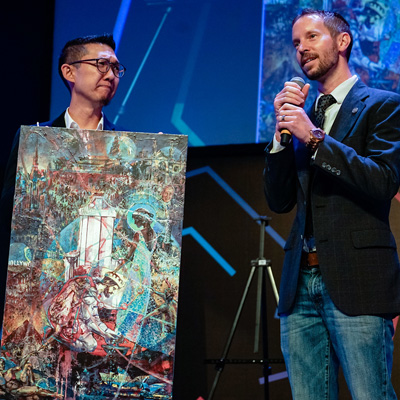Visual Affect as Validation of Truth
At the beginning of the 21st century, William Dyrness observed:
There is surely a fundamental agreement on all sides that we have entered a visual era. Moreover—although here there is probably less agreement—there is no going back. [. . .] And if we are convinced that Christ continues to be Lord of history, that he is working out his purposes in and through human history, and that he calls us to a glorious future kingdom, we do not want to return to the past.1
As the Lausanne Movement examines the state of the Great Commission, pondering how we might communicate and live in light of the gospel in the next quarter century, we cannot ignore the key role of the visual in producing affect (emotion leading to a physical or mental response) that results in either distrust or validation of truth.
We cannot ignore the key role of the visual in producing affect (emotion leading to a physical or mental response) that results in either distrust or validation of truth.
This crucial topic continues the conversation on the arts outlined in The Cape Town Commitment,2 challenging us to take more seriously the principles put forward there, because if we continue to underestimate the role of the visual—which in itself connects to many other kinds of artistic expression—we fail to understand God’s design for powerful forms of motivation and truth-telling.

Visuality, Materiality, and Artistic Communication for the Great Commission
In Contextualizing the Faith: A Holistic Approach, missiologist Scott Moreau emphasizes the breadth of this topic and its deep relevance to the Great Commission. He writes,
By the artistic, or material, dimension I refer to the multitude of ways people symbolically capture and express ideas, values, and themes of their religion or of their personal approach to their religion [. . .]. This dimension includes architecture, art (sculptures, paintings), objects (crosses), locations (cemeteries, holy sites), religious fashion and decoration, and so on. It also includes art as performance, from singing to sermonizing to creating music and drama.3
This short list is only meant to point in the direction of artistic communication and doesn’t begin to exhaustively cover the ubiquitous presence of visuality, as it intersects with the expression of truth expressed both by God and by humans created in his image.
Moreau points out that our theology of the arts should start at the very beginning of God’s interactions with us: ‘After the unimaginable act of creating the universe itself, with all its beauty and functionality, the first mundane act of art found in the Bible is when God makes garments out of skins for Adam and Eve after the fall (Gen 3:21). God is infinitely creative (from the universe to garments), and part of being an image-bearer for us is that we, too, are creative.’4 But many see the arts as only meant for those specially gifted as ‘artists’. If we could see the arts as ‘any heightened form of communication’,5 we’d understand their importance as more than self-expression or entertainment, since art also ‘challenges, cajoles, pacifies, preaches, warns, and admonishes—and can do all of that at the same time’.6
a biblical theology of the visual flows from the incarnation of Christ (kenosis), exemplifying God’s plan for materiality and visuality as key to validation of truth.
Far from the Romantic ideals we’ve inherited and continue to propagate of the arts being only for specially gifted people, ‘all the arts come from God, the supreme Artist and supreme beauty, as a gift to believers and unbelievers; art is a manifestation of “common grace”, and serves the glory of God apart from the economy of salvation.’7 Furthermore, a biblical theology of the visual flows from the incarnation of Christ (kenosis), exemplifying God’s plan for materiality and visuality as key to validation of truth. The kenosis was the ultimate visual validation of Jesus as the way, the truth, and the life.8
Gesa Theissen observes, ‘With the beginning of Christianity, the notion of a trinitarian God and faith in Jesus Christ as God incarnated were to be momentous in the development of the relationship between faith and art in a Christian context. The incarnation was vital in developing a positive attitude toward the image and in the idea of seeing the divine, the logos made flesh.’9 Attitudes toward visual and artistic expressions of faith varied widely throughout the history of the church, however, so as we look toward 2050, it is worth examining the role of the visual as it produces affective responses and impinges on validation.
Emotion and affect
Research in adult learning and emotion reveals that ‘dominant Western culture prizes rational-cognitive ways of knowing. In a milieu where logic rules and reason prevails, emotional and embodied ways of knowing are often dismissed and ignored.’10 This view of cognition, however, contrasts with the role of emotion in decision-making documented in the study of affect, which can be defined as ‘a physical or mental response to artistic and cultural productions that are themselves manifestations of personal, social, and communal experiences.’11
Rizvi explains the connection between emotion and affect in this way: ‘[I] employ the term emotion as interchangeable with “feeling,” and consider affect to be a discernible trace or residue of emotion. This is distinct from the way the term is used by key figures in what has come to be known as affect theory, but arguably a use that makes discussion across fields more productive.’12 So while the two concepts (emotion and affect) are linked, affect is important in the process of validation because it is more than a feeling—it is connected to motivation, moving a person toward action and new ways of seeing the world, a crucial part of what happens as we participate in the Great Commission, both as hearers of the gospel message and as those who are moved to go and tell.
Discoveries in neurology and adult learning over the last several decades have turned upside down much of what we thought we knew about human learning and decision making. We now know that ‘cognitive and affective domains of knowing are intertwined and inseparable.’13
The role of affect in validation, trust, and truth
The field of judgement and decision-making (JDM) is also benefiting from new understandings of how the brain works. In the last several decades, JDM researchers looking at affect and emotion have focused increasing attention on ‘how affective feelings influence judgments and decisions’.14 Their studies have shown that ‘affective rationality assists decision makers to integrate disparate information and to make sense out of a complex world’.15 This complex relationship between emotion and affect—moving us to make decisions about what we can trust and what we understand to be true—is influenced at an even more basic level by what our brains choose to focus on and remember. As it turns out, even getting the attention of the brain involves emotion.
As it turns out, even getting the attention of the brain involves emotion.
Discoveries in neurology as it relates to human memory and attention show that ‘the vast majority of sensory data bombarding our brains are not encoded because the brain does not pay attention to information that, in terms of its existing neural networks, is meaningless’.16 It turns out that two factors influencing both attention-getting as well as recall (both important in decision-making and the process of validation) are related to ‘whether or not the information has meaning and whether or not it has an emotional hook’.17 ‘It is almost as if the brain has two memory systems, one for ordinary facts and one for those that are emotionally charged.’18
The implications of these insights on how our brains work in relation to validation of truth and trust cannot be ignored. In our service of the Great Commission, our reliance on propositional, word-focused communication (while marginalizing visual and artistic forms of gospel communication) is another example of our failure to contextualize the gospel for a world that is ready to hear, if we will just speak the language of their hearts—the visual and other artistic languages that connect to their emotions.

Arts and Validation of the Gospel
A groundswell of engagement in arts and mission
On one hand, there is a steadily growing engagement in arts and mission, fed by a grassroots movement of people wanting to serve God through the arts and who are motivated by a passion for the Great Commission. Many of these people are engaging with networks such as the Lausanne Arts Issue Network,19 Arts+,20 Crescendo,21 Initiative Francophone,22 Global Ethnodoxology Network (GEN)23 and its related affiliates such as Asociación Latinoamericana De Etno Artes (ALDEA),24 European Community of Christian Artists (ECCA),25 and Arts in Mission Korea,26 among others.27 These networks are hosting conferences and tracks within others’ conferences in a manner that reflects their distinctives.28
Certainly the number of networks, conferences, and resources has expanded in the last few decades, and a slowly-growing list of mission agencies are creating positions for missionaries who focus on fostering the creation of local, contextualized arts (sometimes called ‘ethnodoxologists’).29 But overall, mission strategies do not incorporate a robust engagement of the arts into their core values and methods, leaving it largely to the arts networks to support and encourage. Believing that arts are not integral to mission, many para-church mission agencies rely on ‘para-mission’ networks to encourage, train, and resource those focused on arts and mission.
A growing understanding of the value of the arts is nonetheless making itself felt in a myriad of large and small ways. In a 2021 statement of core values for engaging the arts in mission, the Global Ethnodoxology Network (GEN) affirmed the arts as
potent [. . . and] indispensable to human thriving. The arts are integral to personal and individual expression, and in initiating, transmitting, and reinforcing interpersonal and group communication. They permeate communities, marking messages as important, embedded in, and separate from everyday activities, drawing not only on cognitive, but also experiential, bodily, multimodal, and emotional ways of knowing. Arts instill solidarity, reinforce identity and serve as a memory aid. They inspire people to action, provide socially acceptable frameworks for expressing difficult or new ideas, and open spaces for people to imagine and dream.30
GEN and other related networks are motivated by the fact that the Bible itself recounts multiple ways that God communicates with us through the arts: vast collections of artistic forms such as proverbs, songs, stories, poetry, parables, as well as examples of drama (for prophecies), visual art to engender repentance (Num 21:1–8), and vivid descriptions of visual imagery and dancing.
These burgeoning networks are asking a key question: If God chose these methods of communication with us, why do we minimalize them in our own engagement with the Great Commission? They believe it’s not just the arts that are neglected. Artists are marginalized as well. There is a growing emphasis on local arts in mission, as well, because ‘local artistic communication exists and is owned locally; there’s no need to translate foreign materials, and local artists are empowered to contribute to the expansion of the kingdom of God.’31
Alongside the emergence of thinking that would lead to statements like the GEN Core Values, Lausanne’s Cape Town Commitment’s statement on ‘Truth and the Arts in Mission’ was published in 2011, providing an impassioned plea affirming the crucial role of the arts and artists in the Great Commission:
We possess the gift of creativity because we bear the image of God. Art in its many forms is an integral part of what we do as humans and can reflect something of the beauty and truth of God. Artists at their best are truth-tellers and so the arts constitute one important way in which we can speak the truth of the gospel. Drama, dance, story, music and visual image can be expressions both of the reality of our brokenness, and of the hope that is centred in the gospel that all things will be made new. In the world of mission, the arts are an untapped resource. We actively encourage greater Christian involvement in the arts.’
A. We long to see the church in all cultures energetically engaging the arts as a context for mission by:
- Bringing the arts back into the life of the faith community as a valid and valuable component of our call to discipleship;
- Supporting those with artistic gifts, especially sisters and brothers in Christ, so that they may flourish in their work;
- Letting the arts serve as an hospitable environment in which we can acknowledge and come to know the neighbour and the stranger;
- Respecting cultural differences and celebrating indigenous artistic expression.32
This ‘Truth and Arts in Mission’ statement articulated a clarion call for the kind of arts-informed gospel engagement that has been thoroughly validated by the aforementioned studies in emotion and affect, neurology, human learning, and judgement and decision-making.
In its section on orality, The Cape Town Commitment reflects this commitment to the arts as a method of localization and contextualization, encouraging mission agencies ‘to develop oral strategies, including: [. . .] appropriate orality training for pioneer evangelists and church planters [to] use fruitful oral and visual communication methods for communicating the whole biblical story of salvation, including storytelling, dances, arts, poetry, chants and dramas’.33 Yet twelve years after the publication of The Cape Town Commitment, we see only slow progress in overall mission strategies for fostering robust engagement with the arts.
The Global South and Indigenous artistic communication
Beginning around the turn of the twentieth century, Christianity worldwide experienced a slight contraction—from ‘the statistical high point of Christianity [in] 1900, when 34.5 percent of the world’s population was one form of Christian or another’ to a low of 32.2 percent by 2015.34 Not until 2020 did we see projections for ‘a slight increase, with a larger increase by 2050 to 35.0 percent of the world’s population. This increase has a simple explanation. The decline of Christianity in the Global North is now being outpaced by the rise of Christianity in the Global South (ie Africa, Asia, Latin America, Oceania)’.35
Christians by continent, 2020.Source: Todd M. Johnson and Gina A. Zurlo, World Christian Encyclopedia, 3rd ed. (Edinburgh: Edinburgh University Press, 2019), 8,10,12,14,16.
While mission approaches in the Global South have also been influenced by the propositional truth-telling approaches of the North, in many cultures of the Global South, people are seen as fully creative human beings (rather than divided into ‘artists’ and ‘non-artists’) and rely on visual, oral, relational, and artistic forms of communication rather than abstract, propositional, and apologetic-based approaches. Jay Matenga, in a presentation on ‘The Indigenous Future of Missions’ proposed that ‘the future of missions will be significantly influenced by centring the local and allowing indigenous values to guide the practice of missions forward into a healthier intercultural experience’.36
For example, the design of buildings is an art form that speaks and affects us perhaps more than we think. In addition to a religious building’s external architectural form, even the arrangement of space in the interior may communicate unintended messages. Across the continent of Africa, for example, Western forms of church architecture evoke a courtroom setting for Africans—a place of accusation rather than a place of conviviality. In contrast, most contextualized gathering spaces in sub-Saharan Africa (even in the presence of the local authority), arrange people in a circle, demonstrating that we’re all subject to the same things—we’re equal.37
Effect on the world, the church, and the Great Commission
First, and most importantly, in this postmodern and ‘post-truth’ period, we need a shift in evangelistic strategy toward engaging artistic communication to validate and defend truth rather than relying primarily on apologetics and propositional truth-telling. Visual and other artistic languages generate powerful affect, motivation, and response to truth, so appropriately contextualized artistic forms of communication will be central to our witness and worship as we participate in the Great Commission.
At the same time, we can expect a growing distrust of visual and artistic forms of knowing due to the impact of rapidly expanding Artificial Intelligence (AI) technologies on the artistic landscape. The use of AI in all kinds of communicative modes increases the sharp need for critical visual literacy, since even ‘visuality’ is also subject to ‘this historical moment of viral untruth’.38

Opportunities and Challenges for Great Commission Efforts in the Arts
An underestimated challenge for engaging the arts in mission is the urgent need for contextualization. It is vitally important to understand both the role of cultural specifics as well as globalization in visual affect and the arts. ‘The goal of contextualization remains the same, namely faithful communication of, reflection upon, and living out the Christian faith in ways appropriate to specific contexts.’39 It is vitally important to remember that arts and music are not a ‘universal language’ that can be easily understood across cultural divides.40 Contextualization and localization will be required, just as they are in all missional activities.
It is vitally important to understand both the role of cultural specifics as well as globalization in visual affect and the arts.
Another challenge is our own penchant for relegating the arts to a lower priority in the communication of the gospel. If we can begin to see arts and ministry as part of an integrated, holistic approach to communicating the gospel in local contexts, local artists will thrive, and so will deep, powerful communication of the gospel in all its beauty. But since The Cape Town Commitment was published in 2011, continued marginalization of visual and related forms of artistic communication has allowed a tragic barrier to remain in the way we live out the Great Commission.
Despite the challenges of re-thinking our propositional approaches to the validation of truth, the opportunities for powerful artistic gospel communication in the Great Commission unfold before us in unprecedented ways. As we look toward 2050, contextualized expressions of artistic communication will enrich our efforts to validate the truth of the gospel and serve the Great Commission. Just as the incarnation of Christ brought Truth to live among us, ‘using local artistic traditions to present new biblical concepts that are unknown to the people is like “serving Scriptures in local dishes”’.41
We believe The Cape Town Commitment’s statement on Truth and Arts in Mission is still a forward-looking challenge but that it has not been adequately engaged for the gospel and the Great Commission. As we set our eyes on the state of the gospel in 2050, let us act on the sure knowledge that ‘artists at their best are truth-tellers and so the arts constitute one important way in which we can speak the truth of the gospel’.42
Resources
- Arts for a Better Future workshop
- Global Forum on Arts and Christian Faith
- Sparkling Creativity, Ethno Arts Podcast
- Lausanne Movement Consultation on Arts in Mission
- Lausanne Global Classroom: Arts
- Global Ethnodoxology Network
Endnotes
- William A. Dyrness. Visual Faith (Engaging Culture): Art, Theology, and Worship in Dialogue (Grand Rapids, MI: Baker Academic, 2001), 132.
- The Lausanne Movement. The Cape Town Commitment: A Confession of Faith and a Call to Action. 2011. https://lausanne.org/content/ctc/ctcommitment.
- A. Scott Moreau. Contextualizing the Faith: A Holistic Approach (Grand Rapids, MI: Baker Academic, 2018), 8.
- Moreau, 141.
- Brian Schrag. Creating Local Arts Together: A Manual to Help Communities Reach Their Kingdom Goals. ed. James R Krabill (Pasadena, CA: William Carey Library, 2013), 51.
- Moreau, 44.
- Richard Viladesau. ‘Aesthetics and Religion’ in The Oxford Handbook of Religion and the Art. ed. Frank Burch Brown (Oxford: Oxford University Press, 2018), 34.
- Leon Morris, in the New International Commentary on the New Testament, notes that ‘truth is closely linked with Jesus. He could even say, “I am [. . .] the truth” (14:6). [. . .] It is plain that for John truth is many-sided and many-splendored. When he speaks of the incarnate Word as full of grace and truth he is pointing us to the fact that truth and the complete reliability of God are bound up with one another.’
- Gesa Elsbeth Thiessen. ‘Artistic Imagination and Religious Faith’ in The Oxford Handbook of Religion and the Arts. ed. Frank Burch Brown (Oxford: Oxford University Press, 2018), 79.
- Randee Lipson Laurence. ‘Powerful Feelings: Exploring the Affective Domain of Informal and Arts-Based Learning.’ New Directions for Adult and Continuing Education 2008 no. 120 (2008): 65–66, https://doi.org/10.1002/ace.317.
- Kishwar Rizvi, ed. Affect, Emotion, and Subjectivity in Early Modern Muslim Empires: New Studies in Ottoman, Safavid, and Mughal Art and Culture (Boston: Brill, 2018), 4–5.
- Rizvi, 186.
- Laurence, 70.
- Ellen Peters et al. ‘Affect and Decision Making: A ‘Hot’ Topic.’ Journal of Behavioral Decision Making 19 (2006), 79. https://doi.org/10.1002/bdm.528.
- Peters et al., 83.
- Pat Wolfe. ‘The Role of Meaning and Emotion in Learning.’ New Directions for Adult and Continuing Education 2006, no. 110 (2006): 36. https://doi.org/DOI: 10.1002/ace.217.
- Wolfe, 37.
- Wolfe, 39.
- Lausanne Arts Network (https://lausanne.org/networks/issues/arts – https://www.facebook.com/groups/1159275907469264).
- Arts+ (https://www.artsplus.info).
- Crescendo (https://www.crescendo.org/).
- Initiative Francophone (initiative_franc@wycliffe.net) is a network of missionary organizations in French-speaking Africa that regularly organizes conferences and publications on subjects relating to African culture and the arts in particular. The theme of their 2023 consultation was ‘Rites and symbols, songs and dances at the examination of the Gospel.’
- Global Ethnodoxology Network (GEN) (https://www.worldofworship.org/).
- Asociación Latinoamericana De Etno Artes (ALDEA) (https://www.facebook.com/ALDEA.EtnoArtes)
- European Community of Christian Artists (ECCA) (https://www.facebook.com/groups/651449075271467/)
- Arts in Mission Korea (https://www.facebook.com/ArtsInMissionKorea)
- Christians in the Visual Arts (CIVA) successfully networked visual artists for 45 years but ceased operations in 2023 (https://www.civa.org/faq).
- The Evangelical Missiological Society (EMS) has hosted an Arts Track every year since 2015, and several conferences have focused on arts in mission as their theme: OMSC’s Mission Leaders Forum (2022), American Society of Missiology (2023); Moody Missions Conference (2024), and so on.
- A list of some of the organizations with arts workers supporting a contextualized approach to arts can be found here: https://www.worldofworship.org/organizations/#agencies.
- ‘Core Values.’ Global Ethnodoxology Network. https://www.worldofworship.org/core-values/.
- Schrag, vxi.
- The Lausanne Movement. The Cape Town Commitment: A Confession of Faith and a Call to Action, IIA.5.
- The Lausanne Movement. The Cape Town Commitment: A Confession of Faith and a Call to Action, IID.2.C.
- Gina A. Zurlo, Todd M. Johnson, and Peter F. Crossing. ‘World Christianity and Mission 2020: Ongoing Shift to the Global South.’ International Bulletin of Mission Research 44, no. 1 (2020): 9, https://doi.org/10.1177/2396939319880074.
- Zurlo, Johnson, and Crossing, 9.
- Jay Matenga. ‘Indigenous Future of Mission: Authority, Indigeneity, and Hybridity.’ Seminar presented to Global Connections UK. 14 February 2022. https://jaymatenga.com/pdfs/MatengaJ_IndigenousFutureMissions.pdf.
- Roch Ntankeh. personal correspondence. 15 July 2023.
- Robin Redmond Wright, Jennifer A. Sandlin, and Jake Burdick. ‘What Is Critical Media Literacy in an Age of Disinformation?’ New Directions for Adult and Continuing Education Special Issue: Critical Media Literacy in a Pandemic of Disinformation and Conspiracy, no. 178 (2023): 12, https://doi.org/10.1002/ace.20485.
- Craig Ott. ‘Globalization and Contextualization; Reframing the Task of Contextualization in the Twenty-First Century.’ Missiology: An International Review 43, no. 1 (2015): 43–44, https://doi.org/10.1177/0091829614552026.
- Héber Negrão. ‘The Arts Are Not a Universal Language: Ethnodoxology and Integrating Local Arts in Worship.’ Lausanne Global Analysis 11, no. 5 (2022), https://lausanne.org/content/lga/2022-09/the-arts-are-not-a-universal-language; Robin P. Harris. ‘The Great Misconception: Why Music Is Not a Universal Language’ in Worship and Mission for the Global Church: An Ethnodoxology Handbook (Pasadena, CA: William Carey Library, 2013), 82–89. https://www.worldofworship.org/wp-content/uploads/2016/08/Robin-Handbook-Article.pdf.
- Michelle Petersen. ‘Serving Scripture in Local Dishes: Seven Analytic Lenses.’ Presented at the International Bible Translation Conference, Dallas, TX. 14 October 2013.
- The Lausanne Movement. The Cape Town Commitment: A Confession of Faith and a Call to Action, IIA.5.



